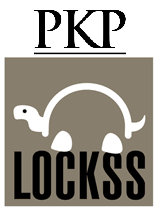PRO VELASCO, MARÍA LUISA (2021). Introducción a la ética de Robert Spaemann. Comares. 180 pp.
Keywords:
ethics, person, happiness, bioethics, metaphysics, utilitarianismAbstract
On this work Professor María Luisa Pro Velasco carries out a systematization of Robert Spaemann's thought from his ethics view as an anthropological way for each person that leads everyone to happiness, our ultimate goal and a telos we naturally and innate tend, taking into account bioethical actual problems, but grounded in metaphysics. She considerates too, Spaemann's hiden dialogue with Peter Singer, Derek Parfit and Daniel Dennett's utilitarism.Downloads
Global Statistics ℹ️
|
324
Views
|
251
Downloads
|
|
575
Total
|
|
References
Turbón, D., La evolución humana (Ariel, Madrid 2006), 245-248.
PRO VELASCO, MARÍA LUISA (2021). Introducción a la ética de Robert Spaemann. Comares. 180 pp.
Downloads
Published
How to Cite
Issue
Section
License
The author reserves the rights (copyright) of the published works, and the journal encourages and allows their reuse, from the preprint. The works are published in the electronic edition of the journal under a license "Creative Commons Attribution / Attribution-NonCommercial 4.0 International Public License - CC BY-NC 4.0", and can be copied, used, disseminated, transmitted and publicly exhibited.
The author / s partially transfer the property rights (copyright) of this work for the printed and online editions, provided that:
- The authorship and original source of its publication (magazine, publisher and URL of the work) is cited.
- Are not used for commercial purposes.
- The existence and specifications of this user license are mentioned.
It also declares to have respected the ethical principles of research and to be free from any conflict of interest.
"C.P.E." encourages the authors and the scientific community to the maximum promotion and dissemination of the works in their final version through:
1) Your list of contacts (emails) and social networks (Facebook, Twitter, LinkedIn ...).
2) Institutional repository of your University and public repositories (Mendeley, Cosis ...).
3) Scientific social networks (ResearchGate, Academia.edu, Kudos ...).
4) Personal or institutional website, blog, etc.
5) Google Scholar, ORCID, ResearchID, ScopusID, Dimensions, PlumX ...
6) Printed copies purchased directly and sent to specialists for reading and subsequent citation if appropriate.
















1.png)
1.png)

1.png)





.png)
.png)

.png)
1.png)
1.png)
